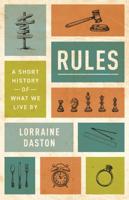Publisher's Synopsis
In 1815 the British army stood at a peak in its history: under Wellington it had taken part in the final defeat of Napoleon at Waterloo. Yet in 1854, when next engaged in war against a European enemy, its performance was at best mediocre and at worst disastrous. For the press at the time, as for historians since, the Crimean War revealed an incompetent, antiquated army, rusty after forty years of complacent neglect. From Waterloo to Balaclava shows such oversimplification to be false. In addition to absorbing the lessons of the Napoleonic Wars, the army had to contend with recurrent campaigns throughout the Empire, and its tactics and doctrine were the subject of constant debate. Under the impact of industrialisation, the evolution of military technology proceeded apace, and the range and accuracy of infantry fire (and, potentially, artillery) increased at least fourfold. These three influences - the Napoleonic Wars, colonial campaigning, and new weaponry - all contributed to an evolution of tactics which pointed forwards to 1914 as much as backwards to 1815.






